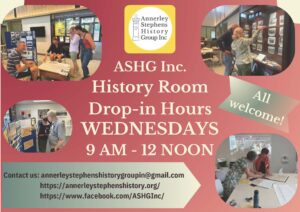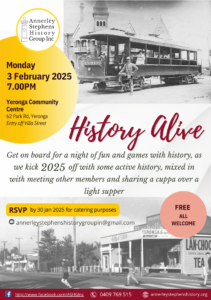Acknowledgments
I’ll just add to the welcomes and acknowledgements that have already been made.
It’s such a special honour to have with us here today:
-
Wendy Taylor, President RSL South Eastern District and fellow veterans.
-
the CEO of Greenslopes Private Hospital Christine Went, whose work and team embodies the history of the hospital, an early part of which is set out in Prof Chris Strakosch’s Chapter. And whose hospital, following ‘the Ramsay Way’ does so much to support those broken veterans who most of us know not how to assist.
-
Irina Bruk, Honorary Consul General of Russia.
-
Captain Kasper Kuiper, former Dutch Honorary Consul and now Chairman of the Queensland Maritime Museum.
And I note a special apology from our great friend Dr David Cilento whose illness unfortunately prevents him from being with us today. David’s family home was on the corner of Villa Street and Ipswich Road abutting this park and much of this history to us, was to David his childhood reality.
And from Dr John O’Hagan AM CQA who turns 100 this year.
And to all of you, of course. Thank you. It’s so uplifting that you are here to support this important record of our place in this world.
An unwillingness to admit to shortcomings
Inherent in the military psyche is an unwillingness to admit shortcomings. This is an attribute in the heat of battle, and a blight in illness. (i)
For many, “seeking help, even admitting they have a problem, is thought to be a sign of weakness”. (1) A risk to career and promotion. (ii) And this extends across the divide of rank and station and, largely, profession.
And at its extreme, is illustrated in the horrific figures showing that almost 65,000 Australians per year attempt to take their own lives. (2) Picture the Gabba full (pre-Covid of course) then add another half again. It’s almost impossible to comprehend and might be debilitating if you could.
It is not just limited to the military, this blight. ‘Among male doctors the suicide rate is twice the rate of the wider male community. Among female doctors it is six times greater. (3)
Which links me back to where I began, veterans and hospitals and homes and helping and, now, having the discussion. Because we’re all in it together.
And so back to the book, Stephens and War.
It could equally be called Stephens at Home. It tells of Annerley and surrounding suburbs during war times and following. (4)
Challenging military history
Volumes like this place a mixed responsibility on the historian.
Military history and commemoration, is somewhat sacrosanct. (iii) To criticise it, (iv) or even question the entrance narrative (v) , or status quo (5) is, to many, commensurate with blasphemy for the religious. (6)
It has even been recorded that Charles Bean, WWI official historian, at one end of the spectrum “occasionally exercised a sanitising hand” while the more critical (and accurate) suggest Bean produced a distorted and misleading but “rather pristine image of the Australian soldier”. (7) Bean’s critics in the 1980s were pilloried. (8)
And some of the chapters of this book do show the unpleasant impacts of war on our community, but also shine a light on our most important role: Common endeavours to help each other. To provide:
-
supportive social relationships; family harmony;
-
a sense of control and purpose;
-
effective help-seeking; and
-
positive connections to good health services. (9)
All the things that help. And importantly here, to be able to tell the story.
A personal reflection
My own luck, was to have had as a boy and young man, a great mate, a friend of the family, a mentor or positive male role model you might call it these days, a doctor-come-gentleman-farmer.
Dr Tony Liggins had been a fighter pilot in WWII flying kitty hawks and spitfires against what he (and many of his ilk) called simply ‘the Japs’. (vi) I don’t think there was any personal malice intended, just a job to be done and a spirit of obligation we call patriotism. (10) He would often take me “up for a flip” in a little Cessna and amaze me with tales of derring do.
I spent many an hour listening to stories of Liggo’s escapades, told matter-of-fact, some with an element of fear, (vii) never boasting, (viii )…of flying sorties strafing villages, engaging in eye to eye combat in propeller driven aircraft, and all sorts of what would then have been comfortably couched as ‘boy’s-own-adventure’ type of stuff.
But nothing do I remember so clearly as his sitting with me, one spring afternoon, both of us sneezing, suffering from hay fever, as the sun set over Upsalls Creek, after a day cutting cattle and feeding the dog, after he had regaled me with another such war story, one where his wing-man, with whom he’d joined the Air Force, had been shot down.
I recall his reclining, overlooking the hills as if they, suffuse with his thoughts, told the story themselves, and he ‘you know Matt, these days, we’d have been pulled off duty, sent on leave to some sort of post-traumatic stress debriefing and spent a week in therapy’.
‘But instead’, he went on ‘we scratched some dinner around our plates, had a pretty poor night’s sleep getting savaged by mozzies and got up the next morning to fly another sortie. Nothing was said.’
Stephens and War – an overview
Nothing was said. It was an era where the prevailing attitude was ‘least said, sooner mended’.
And it is this sentiment that informs this book. Because these aren’t stories that glorify war. These are the stories that tell of what was required of people at home here in this local Stephens area during the war and in helping, on their return, those who we sent to do what we might not do ourselves.
You will be moved by Dr Walding’s account of the establishment of this remarkable Memorial Park, so that we do not forget the futility of war.
And of the Markey Boys, who both died serving in WWI, from a family who lived only 300m from this park. Imagine the grief, then exasperation, driven up to anger, that their parents and six sisters must have experienced at home (just over there) when their sons and brothers were not recognised on this Cenotaph or by a tree in Honour Avenue because they enlisted a mile and a half down the Ipswich Road at Buranda. You’ll have to read Daryl Soden’s chapter to see if there is
even a hint of a just ending to that one.
And of Jack Rigby, a 24yo local insurance clerk, who lived in Belfast Street at the other end of Honour Avenue, killed 10 hours after landing on the first day at Anzac Cove. And his brother George, shot in the leg and arm on the same day then lay overnight, wounded at Gallipoli.
Little wonder then, Jack’s daughter tells us in the chapter by Alan Tonks, he spoke very little about his wartime service.
In the first five days of being there, 600 of his colleagues were killed. And articles detailing the military camps in the area, by Peter Dunn OAM and the Annerley Drill Halls and local firing ranges by Mark Baker which also outlines the home and surrounds of the eponymous Stephens, in the vicinity of Junction Park State School.
Possibly most challenging, though, are Prof Michael Macklin’s terribly confronting accounts of our own war, between the First Nations people and European colonisers, right here, in what was described in 1825 as a ‘veritable garden of Eden’.
Equally confronting, of course, the accounts of courageous First Nation soldiers such as Fred Burnett, fighting alongside their colonisers. Colonisers who wouldn’t recognise them even to vote for half a century after their return. And while Rod Pratt poetically notes that “the overhanging branches of a nearby tree occasionally cover [his grave] with flowers” (11), Fred Burnett a Qld Aboriginal WWI veteran, to our collective shame, lays in an unmarked grave at Toowong Cemetery.
I implore you: read, reflect and act.
And there are stories of those who sought to repair our returning soldiers, at Greenslopes, at the Yeronga Military Hospital, Rhyndarra and of the adequacy, or otherwise, of the controls to protect local heritage places, written by Peter Marquis Kyle.
And of the programs to house our veterans and their families in war service homes and inter-war housing, to pull them together in RSL and community clubs when they returned broken and in need of care and, often, unwilling to tell their stories, or not knowing how to.
Nothing was said.
And so I hope, as well as being the fourth in a series recording the rich history of our area, this book reminds us of our duty, to remember if we, through our elected representatives, choose to send our sons and daughters off to do our dirty work for us, we must, when they return broken and deflated (or ten foot tall) (12), be equally obliged to look after them.
To realise that it is compassionate to allow those stories to be told, to acknowledge the pain and seek to repair the damage. To learn how to have those conversations, to care, so that something is said.
And so I say in closing,… “Look closer, there’s more here than war…what’s most inspiring is that in these [histories] last moments these [people] men were not thinking of themselves they were thinking of one another, and that’s love.” (13)
These papers remind us what is takes to make communities, like ours, so wonderful. And that’s love.
Book launch
So it is now my privilege, to officially launch the volume Stephens and War, and in doing so pay tribute not only to those who I have already commended, but importantly to:
-
Stephen Sheaffe AM, President of the Royal Historical Soc. of Q;
-
Dennis Peel, President of the Annerley Stephens History Group;
-
the conference speakers, authors and contributors.
I launch this book in the hope that by so doing we learn from the shortcomings, and great triumphs, of those who have gone before us. Remember…
The most fragile yet powerful of human emotions is hope … belief in a better future, a better world. Hope is sustained most by reaching out in support of one another… not letting one another down …[and remembering] what we need most is one another. (14)
And just as we remember, we look to the future, to the wonderful spirit of our caring for each other, with hope and compassion and joy.
In that spirit of progress, love and caring, I commend to you, Stephens and War.
















